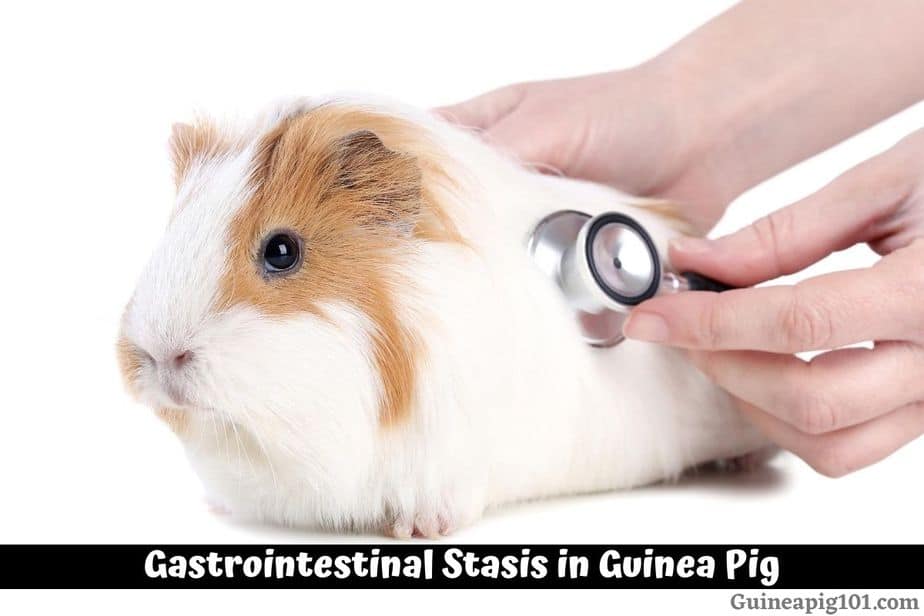In domestic guinea pigs, digestive problems are common, and the most common digestive illness is GI stasis (Gastrointestinal stasis). Gastrointestinal stasis can cause weight loss, swelling, sudden life-threatening conditions, and kidney failure if this will not be treated.
Gastrointestinal stasis means that the water and food can not pass through the intestine at a regular rate. That is because the contractions of muscles in the Gastrointestinal area has stopped or slowed down. That will cause severe digestive problems. A poor diet, dehydration, stress, or an essential sickness can be the causes of Gastrointestinal stasis.
During their lifetime, 25% of guinea pigs get Gastrointestinal stasis. Most of the cases of GI stasis are ignored, which leads to a life-threatening situation.
We will provide you with information regarding signs of GI stasis and how to protect your guinea pig from Gastrointestinal stasis.
What is GI Stasis in guinea pigs?
Small contractions of muscle push food through the intestines in healthy guinea pigs. These muscular contractions are known as peristaltic movements. Gastrointestinal stasis is the reason for the slowing down of peristaltic movements.
That means that the intestines of guinea pigs have become inactive if they are diagnosed with Gastrointestinal stasis.
In short, intestines have become static. That means that the food cannot be absorbed, digested, and excreted regularly.
Is Gi Stasis dangerous?
Guinea pigs spend most of their lifetime in eating, just like other herbivorous creatures. They need food that is high in fiber and low in calories.
GI stasis stops guinea pigs from getting the nutrients that they need; that is why it is problematic.
Guinea pigs must eat daily to get the nutrients and calories they need. However, cats and human beings can survive for several hours without food.
Hence, Gastrointestinal stasis will cause a loss in weight and malnutrition.
Internal blockage
The Gastrointestinal area covers the intestines, esophagus, cecum, and stomach. So, in any of these areas, the blockages could arise. Internal blockages are a severe issue.
The food may combine with hair if it does not pass through the intestines and cause a blockage in the Gastrointestinal area. Sometimes chewing up on fabric, paper or cardboard can also lead to gastrointestinal stasis.
For example, hairballs can lead to GI stasis in guinea pigs.
Dental problems
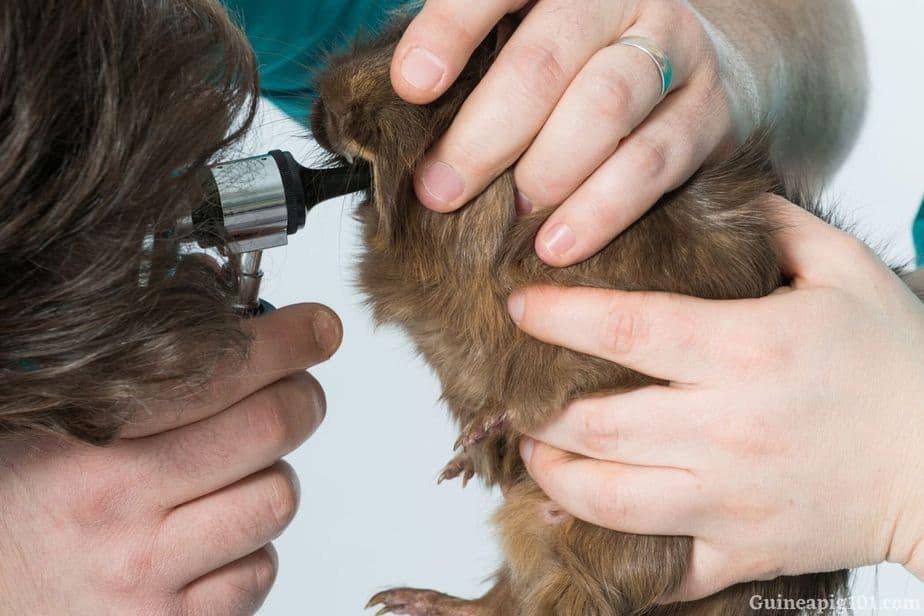
A Guinea pig will lose its hunger due to GI stasis. Quickly, this will lead to dental disease if guinea pigs stop eating.
That is because the teeth of your guinea pig will get trimmed by the act of chewing. Continual chewing is essential to prevent dental disease as guinea pig’s teeth grow 2-3 mm every week.
Change in cecotropes
A cecum is a kind of small bag which is connected to the large intestine of guinea pig.
In healthy guinea pigs, the food which is not digestible from the large intestine will pass through into the guinea pig’s cecum.
The cecum contains bacteria that break down the remaining food and turns it into cecotropes.
Significantly, Gastrointestinal stasis alters the balance of the bacteria in the cecum. A guinea pig with Gastrointestinal stasis cannot generate any cecotropes, as they can only produce runny cecotropes.
These runny cecotropes will be tough to eat since cecotropes provide crucial B vitamins to guinea pigs, which is required for survival.
Liver problems
The liver will try to remove the toxins from the guinea pig’s body when the number of Clostridium bacteria begins to increase in the intestines and cecum.
But, the liver may become overwhelmed if there are too many bacteria present. That will affect the functionality of the liver.
If you don’t treat your guinea pig’s GI stasis immediately, then the liver of the guinea pig will get severely damaged.
Sudden death
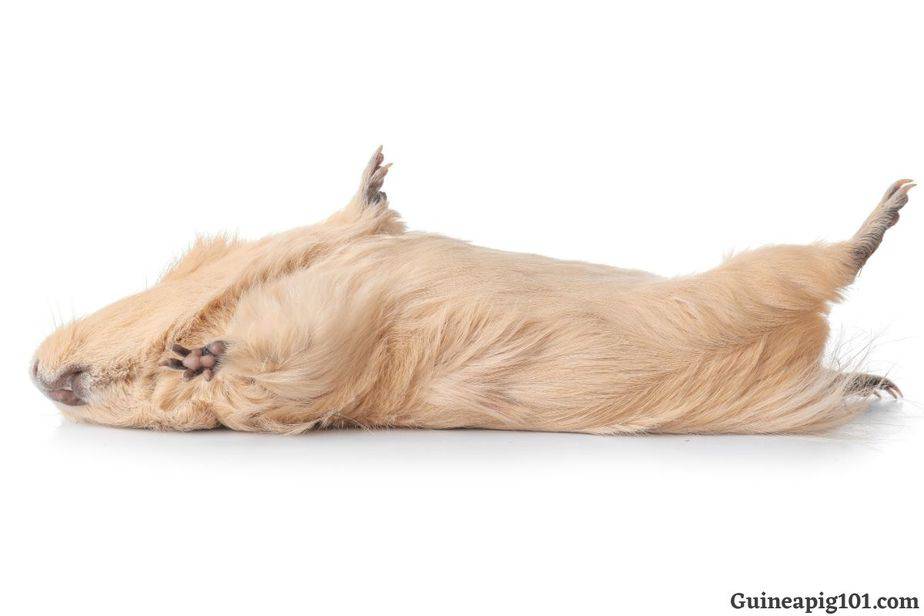
Gastrointestinal stasis is the reason for the sudden life-threatening condition of a guinea pig as many of the guinea pigs passed away with the cause of GI stasis.
So you need to recognize Gastrointestinal stasis in your guinea pig as early as possible.
Signs of GI Stasis in guinea pigs

You need to look upon the symptoms of gastrointestinal stasis to avoid sudden life-threatening of guinea pigs.
Gastrointestinal Stasis symptoms in guinea pigs includes:
- Sitting Crouched or Huddled Over: This indicates stomach pain.
- Teeth Grinding: This indicates that GI stasis is the basic cause of painful sickness if teeth grinding is present with Gastrointestinal stasis.
- Violent Stomach Gurgling: In guinea pigs, gentle gurgling is normal, but the noisy gurgles signify trapped gas. Also, a complete silent stomach can be a hint of Gastrointestinal stasis, your guinea pig’s stomach usually makes a pale gurgling sound.
- Inactivity: Maybe guinea pigs with Gastrointestinal stasis will avoid human contact also.
- Constipation: Only producing limited fecal pellets.
- Excessive, Watery, or Mushy Cecotropes: Gastrointestinal stasis changes the cecum flora, as this clarifies why soft cecotropes are generated.
- An Abnormal Body Temperature: There could be trouble if the temperature of a body is higher than 103°For lower than 101°F.
- Not drinking or eating: This is the characteristic sign of Gastrointestinal stasis.
You need to look for medical treatment if you recognize any of these signs in your guinea pig.
A few hours is enough for leading into a life-threatening condition for your guinea pig, so don’t delay treatment.
What causes GI Stasis in guinea pigs
When the drinks and food cannot move through the GI area, then Gastrointestinal stasis occurs.
GI stasis is a collection of symptoms rather than an infection that causes the GI area to become inactive. That means there is no particular cause.
However, gastrointestinal stasis is tied with at least seven different risk elements. These are examined in detail below:
Low fiber diet
As guinea pigs are herbivores, they need to maintain a high-fiber diet. The primary cause of gastrointestinal stasis in guinea pigs is a low-fiber diet.
The peristaltic muscles get a boost when fiber passes through the guinea pig’s intestine.
These muscle shrinking will wipe food through the intestine and support the digestive system. A low-fiber diet makes the organs inactive and lazy.
High carb diet
Small amounts of carbohydrates are required in the diet of guinea pigs. What they want are included in fresh vegetables and greens. The owner should not have to give processed carbs, like oats and cookies.
A diet rich in complex carbs cannot provide sufficient stimulation in the peristaltic muscle movements. As a result, this can cause watery stools, GI stasis, and swelling.
Also, Enterotoxaemia can be caused by consuming starchy or sugary foods.
Change in diet
Quickly changing the diet of guinea pigs can result in Enterotoxaemia and GI stasis. That could occur even if you improve the diet in positive ones.
You need to change the diet of your guinea pigs very slowly. Make sure you change the diet of your guinea pig over a minimum of 2-4 weeks.
That will protect your guinea pig from the digestive problems and gastrointestinal stasis.
Dehydration
Those guinea pigs who are diagnosed with gastrointestinal stasis are always diagnosed dehydrated. GI stasis is also caused by dehydration.
Gastrointestinal stasis is caused by dehydration because it forces the intestines to break down.
That may discharge the feces from the intestine and cause the feces to become affected.
Those intestines which are blocked are very serious and need to be treated immediately.
Stress
We think that stress is something that will speed up digestive procedures rather than slow them down. As stress can cause a guinea pig’s intestine to break down
Also, this can cause the intestines to become inactive. A stressed guinea pig will also avoid water and food, which can worsen the situation.
Guinea pig’s common stress includes losing their bonded partner, living in an unhygienic enclosure, and interacting with by predators.
Pain
Gastrointestinal stasis can be caused by pain, from a prime illness. That is because the pain becomes so vast that it causes the intestine to close down.
That will block the path of food and stop the peristaltic muscle movements. Some painful and common illnesses in guinea pigs include:
Apart from these, any other type of pain can also lead to GI stasis in guinea pigs. Also, this is another reason to make sure such illnesses are treated quickly.
Gastrointestinal blockage
Intestinal blockages cause gastrointestinal stasis. Most of the time, stress and diet are the cause of GI stasis, though.
The hairball, pulses, seeds, raisins, other small objects are the causes of blockage.
A loud gurgling sound in the stomach and painful bloat is usually caused by intestinal obstruction.
How to treat GI Stasis in guinea pigs?

Gastrointestinal stasis can usually be treated if detected early. You need to take your guinea pig to a reputable veterinary surgeon immediately.
Don’t try to treat GI stasis at home; otherwise, this could be a worse situation.
Your veterinary surgeon may suggest one or more of the following therapies:
Fluid therapy
Dehydration is seen in guinea pigs suffering from GI stasis. It can either be the cause or side-effect of the same.
If your veterinary surgeon identifies GI stasis, they will possibly manage some kind of fluid therapy for your guinea pig.
Subcutaneous fluids can be provided to your guinea pig if they refuse to drink the water.
Massage
Massage is sufficient to reduce the gas in your guinea pig’s belly if the symptoms are light. That will help to facilitate proper gut movement.
If suitable, your veterinary surgeon may show you how to do this massage to support your guinea pig’s healing.
For GI stasis, massage can be an effective home treatment but don’t attempt it until your veterinary surgeon allows you to do this.
Guinea pigs are fragile creatures. Thus, the owner needs to massage safely.
Syringe feeding
The Guinea pig should be motivated to eat normally for quicker recovery. That will help to improve the peristaltic muscle movements.
If your guinea pig doesn’t want to eat food, then force-feeding could be the best choice.
To generate a guinea pig’s hunger, B-complex vitamins are generally used.
Guinea pigs get most of the B vitamins they require from consuming cecotropes.
Due to GI stasis, if your guinea pig is not able to produce cecotropes, supplementing B-complex vitamins can help avoid weakness and improve gut mobility.
Pain relief
GI stasis pain can be terrible because the pain will close down the guinea pig’s intestines.
Pain relief is crucial during the therapy and throughout the recovery duration.
A type of pain relief that comes across to work nicely for most of the guinea pigs is Simethicone.
Maybe your veterinary surgeon will also suggest some additional treatments.
Also, it’s crucial to build a calm and relaxing environment for your guinea pig to minimize the pain during the recovery duration.
How do you treat GI stasis at home?
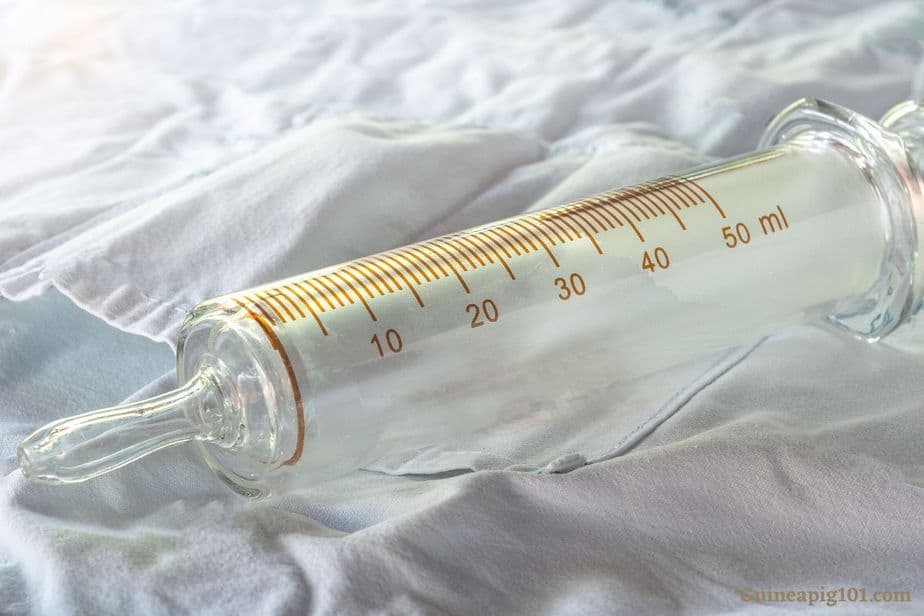
Don’t try to attempt any home remedies if you think that your guinea pig has GI stasis.
First, visit your veterinary surgeon for the identification of the problem. That will confirm that your guinea pig will get the best treatment.
The path to recovery can be slow but proper treatment is a must. But during the recovery duration, you can support your guinea pig at home.
Here are some tips for taking care of your guinea pig for good health:
- Maybe your veterinary surgeon will suggest adding some probiotics to your guinea pig’ food to help with digestion problems.
- Permit your guinea pig to spend time with their bonding partner (if your veterinary surgeon allows you to do so). That will help your guinea pig to stay relaxed and calm.
- Gentle massage could be beneficial: If your veterinary surgeon suggests it. Stop the massage If your guinea pig seems distressed or tired. It may take a while for your guinea pigs to recover.
- Follow the instructions provided by your veterinary doctor and supervise your guinea pig’s medication every day. Watch over your guinea pig closely for any signs of worsening or improvement.
- Try to encourage your guinea pig to drink more water. It is best to give your guinea pig, a bottle, and a bowl to drink from.
- Check that your guinea pig is warm enough. The best temperature for most of the guinea pigs is 20-24 degrees Celsius. If your guinea pig mostly lives outside, bring them inside until they recover fully.
- Try to limit the noises of your house as much as possible. There will be a delay in recovery if your guinea pig feels stressed.
- Try to restore your guinea pig’s hunger as you can stock up your guinea pig’s favorite food. Aromatic herbs such as fennel and parsley can be lovely.
- Also, it is suggested that flowers such as broccoli, yellow dandelions, and rocket flowers are good for boosting guinea pig’s hunger.
How long does GI Stasis last in guinea pigs?
GI stasis can last for a few days to several weeks. It depends on how early it was caught, how serious it is, and what kind of therapy is required.
Prescribed motility medicines can help your guinea pig’s recover quickly. It will usually be 1-2 weeks before the intestines come back to normal functioning.
When their stomach gently gurgles at that time, you will know that your guinea pig is returning to good health. That indicates that the gas has been removed from the tummy.
It may take more weeks for the intestine activities to return to normal.
During the duration of recovery, stay in touch with your veterinary surgeon and report them if anything is bothering you.
It is common for a guinea pig to experience periodic sessions of GI stasis. Avoiding GI stasis from returning is the most important thing to do.
How to prevent GI Stasis in guinea pigs?
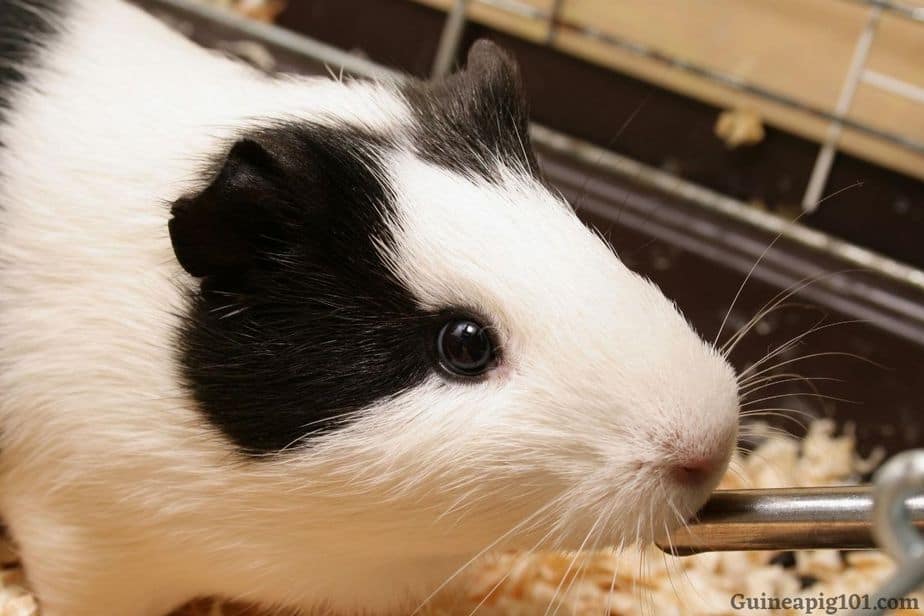
Dehydration, stress, and diet are the major causes of GI stasis. It is good to know the cause, so we can take appropriate action to fix the issue.
So, to maintain good gut health in your guinea pigs, make sure you provide them the following:
- Enough water
- A large pile grass hay
- Bonded cage mate
- A small quantity of fresh, herbs, and green vegetables.
- A constant diet: Any changes should be made very slowly
- A clean enclosure that is sanitized daily.
- A home atmosphere that is mostly free from stress.
- No complex carbohydrates and sugary foods.
- If your guinea pig shows any unnatural behavior, then contact your veterinary immediately.
Providing your guinea pigs with these basic essential then it would protect your guinea pigs against GI stasis and digestive issues.
Can guinea pigs spread GI Stasis?
Gastrointestinal stasis cannot spread between guinea pigs. On the contrary, keeping your guinea pigs together can help to support recovery.
Some different causes of Gastrointestinal stasis can be infectious. For example, respiratory issues like snuffles can be infectious.
So, if your guinea pig is diagnosed with a similar infection, this may be contagious to other pets.
Can guinea pigs get GI stasis? How common is it?
Sadly, Gastrointestinal stasis is quite common in guinea pigs. Gastrointestinal stasis is developed in 25% of guinea pigs.
Poor diet is probably the cause of these cases. Earlier guinea pigs weren’t fed with an appropriate diet.
Now, most of the guinea pig owners feed them a suitable-species diet, for example, green vegetables and fresh hay.
It is good to know that enriching your guinea pig’s diet could significantly impact their health.
Conclusion:
Gastrointestinal stasis is a kind of severe illness, and you need to treat this immediately as this disease can also be life-threatening.
It is a common digestive illness. Gastrointestinal stasis stops the food nutrients which guinea pigs want. You need to act fast if you believe that your guinea pig has a digestive disease.
Your guinea pig can not reduce the gastrointestinal illness by themselves. Also, guinea pigs need to consume and produce cecotropes.
The situation can become life-threatening if your guinea pig won’t poop or eat. As feeding your guinea pig, the correct diet and keeping the stress level at a minimum can prevent digestive illness.
Also, this causes dental problems, changes in cecotropes, internal blockages, liver problems, and sudden life-threatening.
Gastrointestinal stasis is also tied up with Low fiber diet, high carb diet, dehydration, pain, stress, change in diet, and Gastrointestinal blockage, which are harmful to your guinea pig.
You can treat your guinea pig by massaging, fluid therapy, syringe feeding, and pain relief during treatment.
Sources: Fecal impactions, Constipation and Obstipation in Small Animals, GI stasis in guinea pigs.
